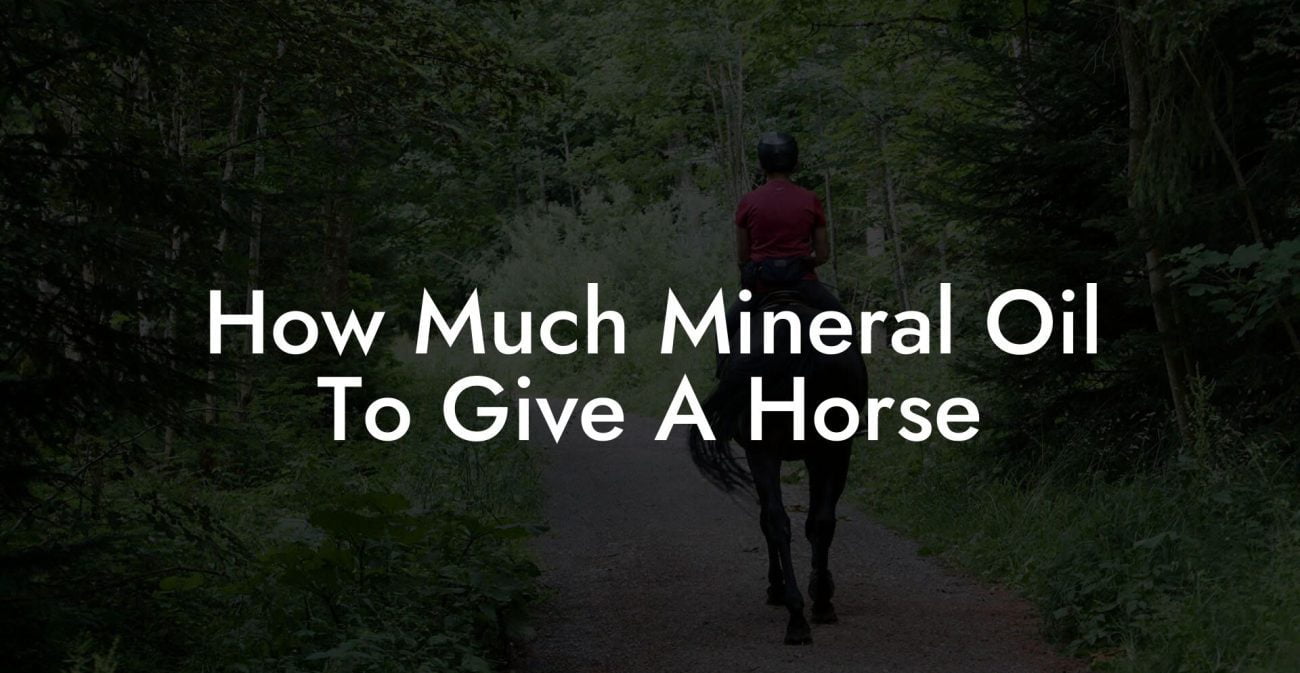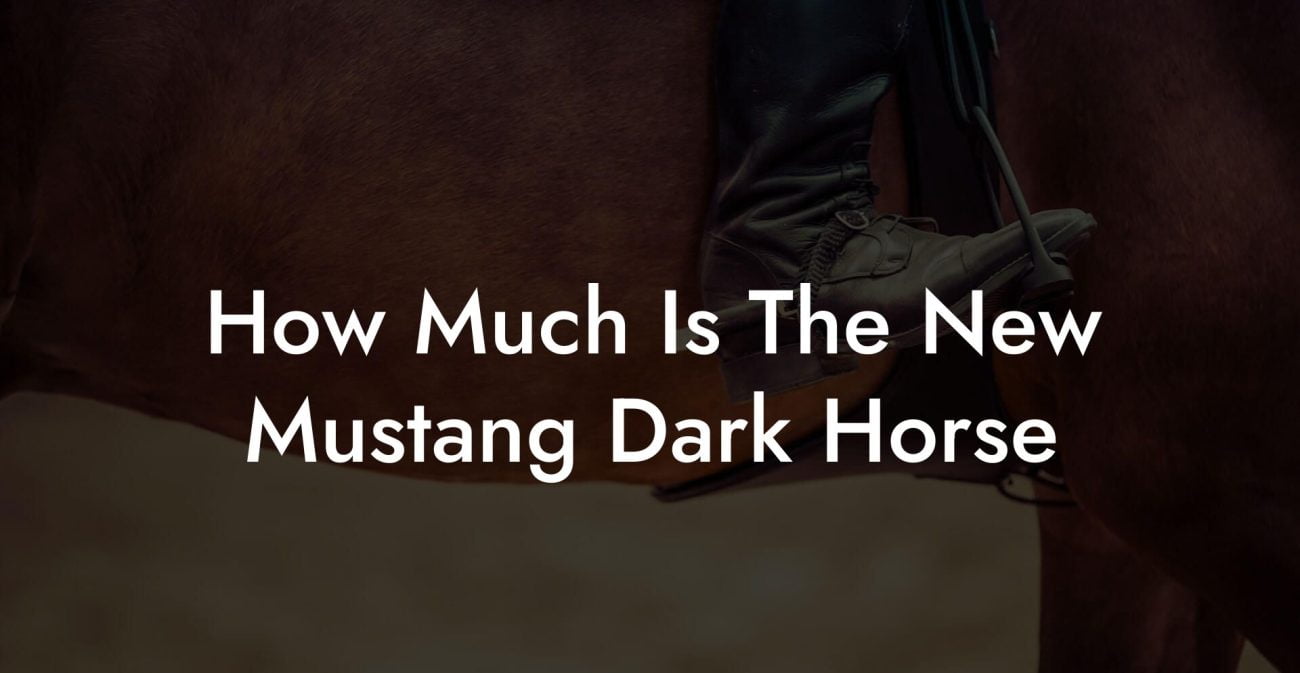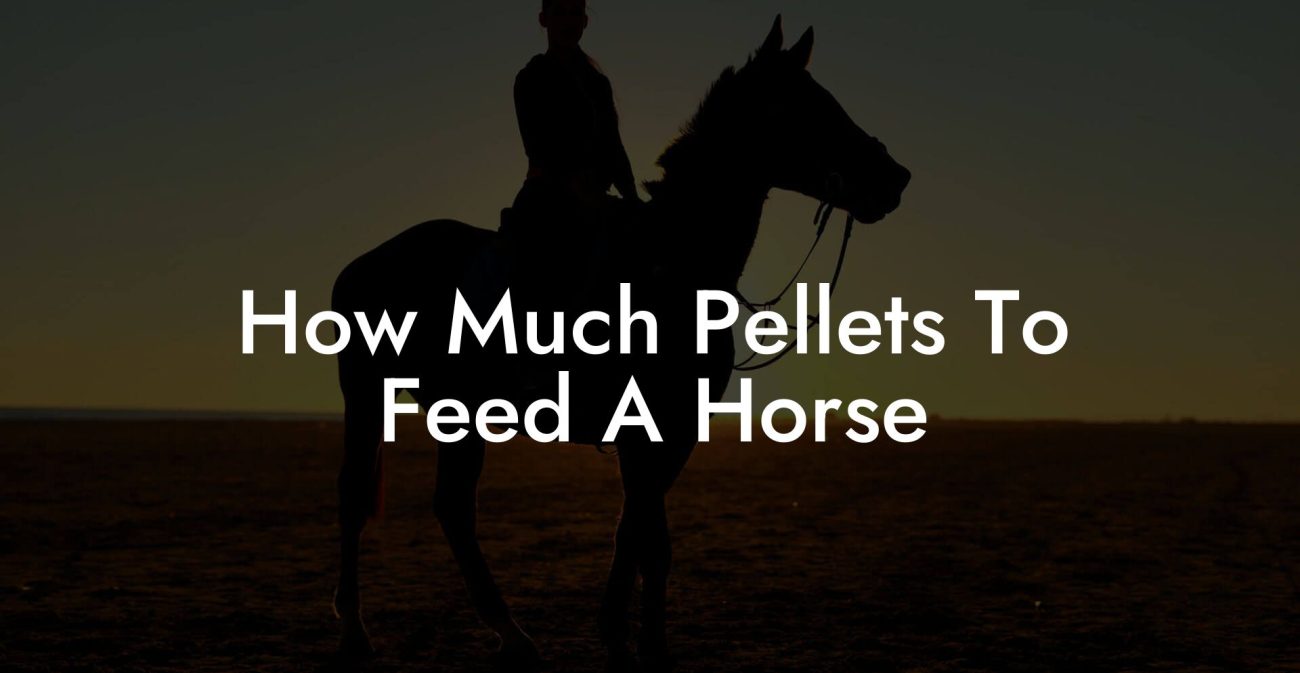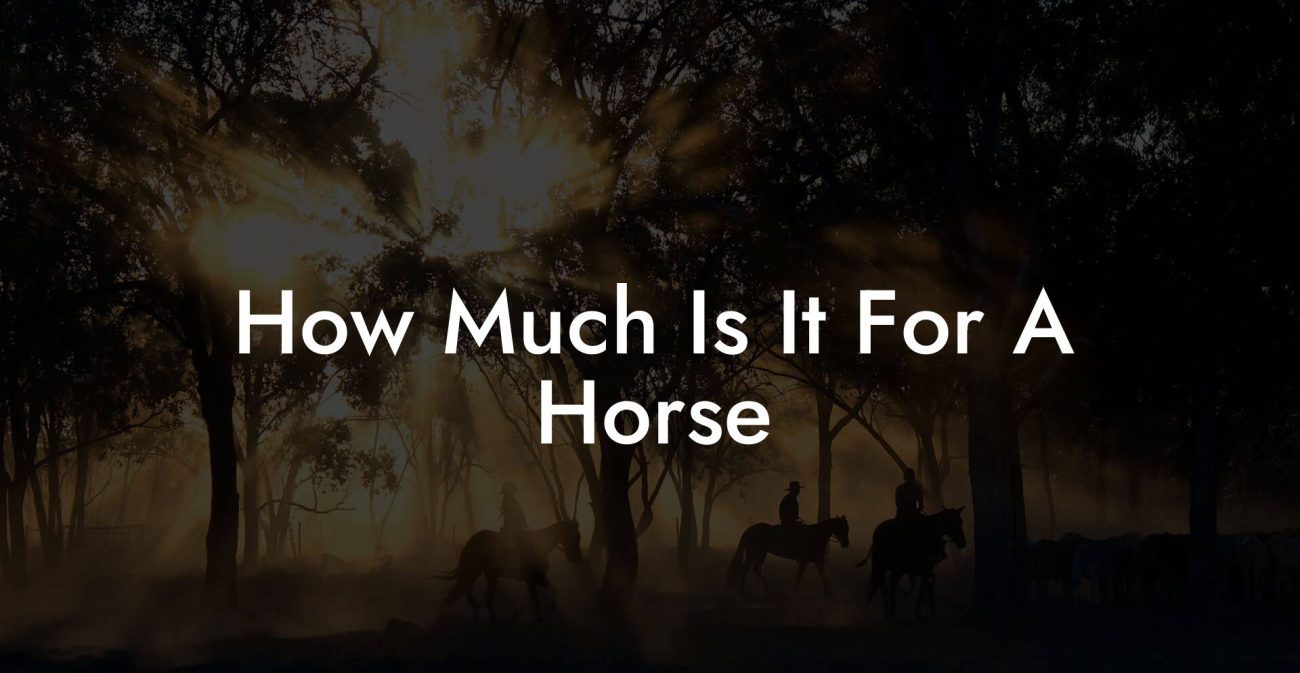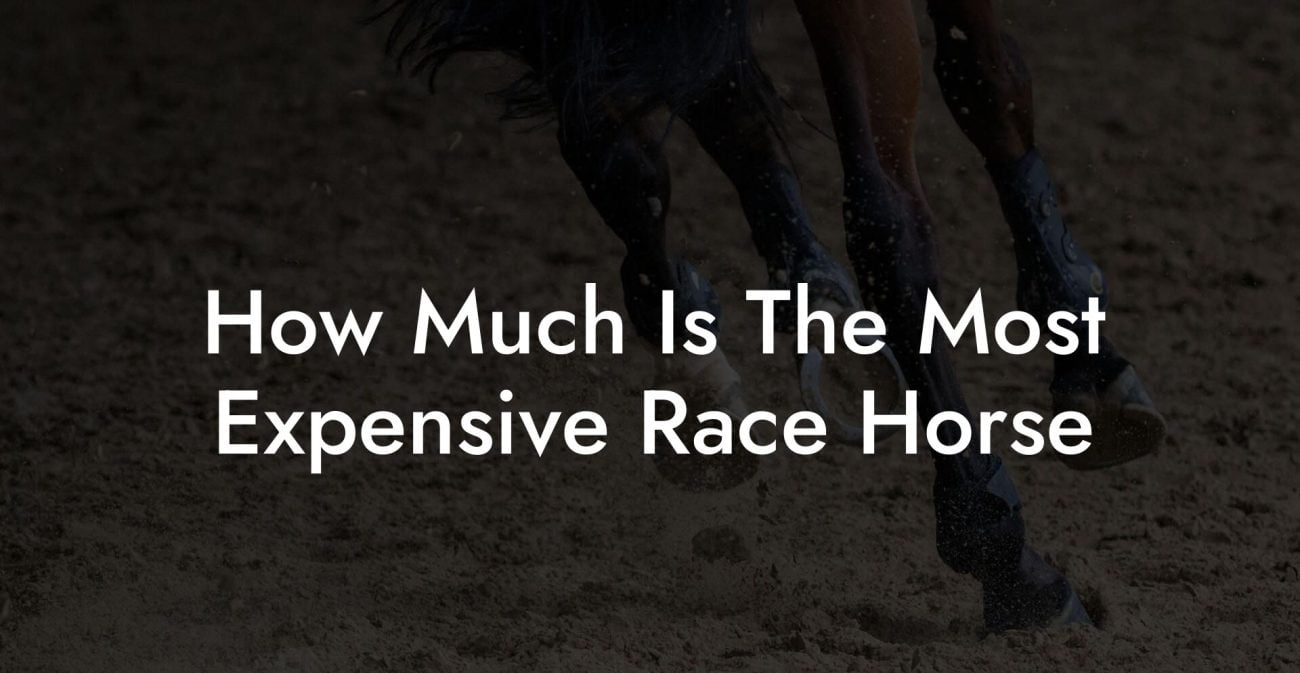Ever wondered how a horse's lungs compare to, say, human lungs or even the latest Tesla? When you think about your favorite equine, envisioning those powerful, graceful strides, you might not realize that behind every gallop is a respiratory system built for speed, endurance, and a whole lot of horsepower, literally! Today, we’re diving deep into the surprising world of equine lungs to answer one burning question: How big are horse lungs? Buckle up, because we’re about to embark on an in-depth exploration of horse lung capacity, the intricacies of equine respiratory anatomy, and how these magnificent organs contribute to performance, health, and the overall care of your four-legged friend.
Quick Links to Useful Sections
- The Marvel of Equine Lung Anatomy
- Digging Deeper: How Do We Measure Horse Lung Size?
- Comparing Horse Lungs to Human Lungs
- Key Factors Influencing Lung Capacity in Horses
- Breed and Genetics
- Age and Development
- Fitness and Training
- Environment and Air Quality
- Medical Conditions
- Why Size Matters: The Impact on Equine Performance
- The Science Behind Equine Lung Efficiency
- Integrating Equine Lung Care Into Your Horse’s Wellness Routine
- Equine Lung Size: Debunking Myths and Misconceptions
- The Role of Equine Lung Capacity in Competitive Sports
- Pro Tips for Optimizing Your Horse’s Respiratory Health
- Resources and Community Support: Your Next Steps
- Case Studies: Real-Life Insights Into Equine Respiratory Health
- Case Study 1: From Struggling to Sprinting
- Case Study 2: Endurance Riding With a Healthy Heart
- Case Study 3: The Impact of Environment on Lung Function
- Innovations in Equine Respiratory Research and Future Directions
- Equine Respiratory Health: A Holistic Approach for Life Long Wellness
- Equine Lung FAQs: Your Questions Answered
- Your Next Gallop Towards Superior Equine Respiratory Health
The Marvel of Equine Lung Anatomy
Horses, much like superheroes, have evolved over millions of years to become masters of endurance and speed. Their lungs are no exception, designed to power a burst of raw speed on the racetrack or to maintain steady oxygen flow during a long trail ride. In fact, the average adult horse’s lungs are impressively large, boasting a volume that can range anywhere from 100 to 120 liters in a well-conditioned showjumping or racehorse. That’s a lot of fresh air whipped into action with every stride!
Unlike our human lungs, which are divided into lobes relatively evenly, the equine respiratory system is highly adapted to their athletic lifestyle. Horses are obligate nasal breathers, meaning they breathe almost exclusively through the nose, a trait that supports the aerodynamic flow of air and helps filter out dust and allergens. Their long, large nasal passages and expansive lung capacity work in tandem to maximize oxygen uptake, ensuring that every muscle fiber receives the essential fuel it needs.
When it comes to lung structure, horses rely primarily on a pair of large, spongy organs that are divided into lobes. The sheer scale of these organs plays a crucial role in their ability to sustain high-intensity activities. In essence, a horse's lung volume is a direct contributor to its endurance and performance, making it an essential aspect of equine health and athletic prowess.
Digging Deeper: How Do We Measure Horse Lung Size?
Measuring the lung size of a horse isn’t as simple as sticking a measuring tape on their flanks (trust us, we tried!). Veterinarians and researchers use a combination of techniques to assess equine lung capacity, including advanced imaging methods like X-rays, computed tomography (CT scans), and even endoscopic examinations. These methods provide accurate insights into the volume and health of the lungs, ensuring that any abnormalities are caught early.
One of the key metrics used to determine lung size is Total Lung Capacity (TLC). For horses, TLC is often estimated through performance tests and respiratory function assessments, which evaluate how effectively the lungs exchange gases during peak exertion. Interestingly, a healthy, fit horse usually displays a TLC that’s significantly larger than what might be expected given its body size. This adaptation is critical to support the immense oxygen needs during a sprint or extended endurance events.
It’s worth noting that lung size isn’t just about raw volume, it’s also about efficiency. The alveoli, tiny air sacs in the lungs, play a critical role in oxygen absorption. In horses, the sheer number of alveoli and their structure enable a remarkably efficient gas exchange process, ensuring that even under the most strenuous circumstances, their muscles remain well-oxygenated.
Comparing Horse Lungs to Human Lungs
Let’s face it, comparing horse lungs to human lungs is like comparing a turbocharged engine to your trusty sedan. The average human lung capacity is around 6 liters, whereas a well-conditioned horse’s lungs can clock in at nearly 20 times that volume! This enormous difference isn’t merely a matter of scale; it highlights the evolutionary adaptations that allow horses to perform at such extreme levels.
Humans and horses have very different respiratory demands. For us, breathing is largely an automatic process providing steady oxygen levels for everyday activities. Horses, on the other hand, need massive bursts of oxygen to power intense physical activity. This is why their lungs have evolved to be both larger and far more efficient. The impressive lung capacity of a horse ensures that, whether galloping at full speed or engaging in endurance events, every cell in its body is nourished with a steady stream of oxygen.
Moreover, the structural design of equine lungs, with their extensive network of bronchioles and alveoli, ensures minimal air resistance and optimized airflow. This allows horses to achieve a level of respiratory efficiency that would make even the most advanced human athletes green with envy.
Key Factors Influencing Lung Capacity in Horses
Just as personality, diet, and lifestyle can influence human performance, several factors can affect the lung capacity of a horse. Understanding these factors is not only fascinating but also essential for anyone who cares for these majestic animals.
Breed and Genetics
Genetics plays a pivotal role in determining the size and efficiency of a horse’s lungs. Breeds that are historically bred for racing, such as Thoroughbreds, often have larger, more efficient lungs compared to breeds known for strength and stamina rather than speed. For instance, Arabian horses, known for their endurance, carry adaptations that give them superior respiratory efficiency.
Age and Development
Like all living creatures, horses experience various phases of physical development. Foals, for example, have relatively smaller lungs that gradually grow and mature as they age. A fully mature horse, usually around five years or older, exhibits peak lung performance, provided it remains in good health. During growth spurts and under proper training, a horse’s lungs can adapt and expand, much like a well-conditioned gym session for your respiratory system.
Fitness and Training
You can’t build a castle without a strong foundation, which, for horses, is a robust respiratory system. Regular exercise, conditioning, and consistent training sessions not only improve cardiovascular health but also enhance the effectiveness of the lungs. Just like humans experience improved lung function after months of cardio training, horses too can boost their oxygen uptake and overall lung health through regular physical activity.
Environment and Air Quality
The environment in which a horse lives plays a critical role in its respiratory health. Horses that live in areas with clean air, minimal pollutants, and low dust levels tend to have healthier lungs. Conversely, horses exposed to high levels of air pollution or dust, common in stables that lack proper ventilation, are at a higher risk of developing respiratory issues. Maintaining a clean and well-ventilated stabling environment is crucial for preserving the lung capacity and overall well-being of your equine friend.
Medical Conditions
Just as in humans, certain medical conditions can affect a horse’s lung capacity. Respiratory illnesses, such as Recurrent Airway Obstruction (RAO) or “heaves,” can cause significant reductions in lung efficiency and overall performance. Early detection and consistent veterinary care are vital in ensuring that your horse recovers quickly and maintains optimal lung function.
Understanding these factors not only adds depth to our knowledge but also empowers horse owners and enthusiasts to take proactive measures in caring for their animals’ respiratory health.
Why Size Matters: The Impact on Equine Performance
The enormous lung capacity of a horse is not just an anatomical marvel, it’s a key performance indicator. When you watch a horse streaking down the track or gracefully navigating a jumping course, you’re witnessing the benefits of a respiratory system that’s optimized for extremes. The direct correlation between lung capacity and athletic performance is undeniable.
A well-oxygenated body means that every muscle is fired up and performing at its best. For racehorses, where every millisecond counts, maximum oxygen delivery is essential. The increased lung capacity translates to better endurance, quicker recovery times, and overall improved stamina. It’s this raw power and efficiency that have made horses the champions of metamorphic athletic events throughout history.
But it’s not just about speed. For horses that compete in endurance riding, a sustained and high level of respiratory efficiency is a game-changer. When a horse maintains a high oxygen flow over long distances, it can stave off fatigue, reduce the risk of respiratory distress, and perform consistently even in grueling races. Hence, understanding how big horse lungs really are isn’t just an academic exercise, it’s a cornerstone of equine sports science.
The Science Behind Equine Lung Efficiency
At the heart of every powerful stride lies a fascinating interplay of biology and physics, and horse lungs are a testament to that sophisticated dance. Inside these colossal organs, millions of alveoli work tirelessly to extract oxygen from every breath. The alveolar walls, thin and permeable, allow for the rapid exchange of oxygen and carbon dioxide, a process that’s far more efficient in horses than in many other mammals.
Researchers have long studied the equine respiratory system to understand how these natural engines achieve such high efficiency. One of the critical aspects of this efficiency is the horses' unique ability to maximize airflow, even during extreme exertion. Their lung tissue is highly elastic, allowing it to stretch and expand during inhalation and quickly recoil during exhalation. This constant motion ensures that their blood is continuously supplied with fresh, oxygen-rich air.
Furthermore, the intricate network of capillaries surrounding the alveoli serves as the final frontier of oxygen exchange. In healthy horses, these capillaries operate at near maximum efficiency, ensuring that oxygen readily diffuses into the bloodstream. This meticulous system not only supports peak athletic performance but also bolsters the overall health and resilience of the animal.
Integrating Equine Lung Care Into Your Horse’s Wellness Routine
Whether you’re a seasoned rider, a competitive trainer, or a horse lover simply marveling at these majestic creatures’ inner workings, caring for your equine companion’s respiratory system is paramount. Like all high-performance athletes, horses benefit from a well-rounded care routine that not only addresses physical fitness but also emphasizes respiratory wellness.
First and foremost, regular veterinary check-ups are essential. A vet isn’t just someone who patches up wounds, they’re your partner in ensuring that your horse’s lungs are in tip-top shape. Routine examinations can catch early signs of respiratory issues such as RAO, infections, or decreased lung efficiency, allowing for prompt intervention.
Then there’s the importance of exercise. Just as humans benefit from cardiovascular workouts, horses thrive on regular, varied physical activity. Whether it’s trail rides in open, fresh air environments or well-planned training sessions at the stable, keeping your horse active helps maintain optimal lung function. Incorporating both low-intensity workouts and high-intensity sprints into your equine care regimen can significantly improve their respiratory efficiency over time.
Environmental management is another critical piece of the puzzle. Ensure that your horse’s stall and stable are well-ventilated and free from excessive dust and pollutants. Routine cleaning, along with the proper storage of bedding and feed, can help reduce the risk of respiratory issues. Investing in quality air filtration systems for indoor stables is also a smart move, particularly if your horse spends a lot of time indoors.
And let’s not forget nutrition. A well-balanced diet plays a vital role in overall health, including lung health. Feed your horse nutrient-rich forages and grains, and consider supplements rich in antioxidants and omega-3 fatty acids. These nutrients can help reduce inflammation in the respiratory tract, aid in tissue repair, and support overall lung function.
Combining these care strategies ensures that your horse isn’t just performing at its peak during competitions, it’s also enjoying long-term health and vitality. After all, a happy, healthy horse is the ultimate reward for any dedicated owner.
Equine Lung Size: Debunking Myths and Misconceptions
There are plenty of myths floating around when it comes to the respiratory systems of horses. One common misconception is that all horses have uniformly large lungs irrespective of their size or breed. In reality, there is considerable variation. The lung size of a miniature horse, for instance, will naturally be less than that of a full-sized Thoroughbred bred for racing. However, even within a given breed, factors such as fitness level, environmental conditions, and genetic predispositions can influence lung capacity.
Another myth is that a horse’s lung health is only relevant for performance horses. Far from it! Every horse, whether it’s used for leisure riding, work, or competition, benefits from optimal respiratory function. Good lung health directly impacts overall energy levels, recovery time, and even behavior. A horse with well-maintained lungs is likely to be more expressive, active, and overall happier, proving that respiratory care is as critical as hoof care or dental check-ups.
In debunking these myths, it becomes evident that understanding how big horse lungs are, and what that means for equine performance, is not just a topic for scientists. It’s a fundamental aspect of responsible horse ownership and care.
The Role of Equine Lung Capacity in Competitive Sports
Step into the arena of equine sports, and you’ll quickly realize that lung capacity is the unsung hero behind many record-breaking performances. Whether in flat racing, show jumping, endurance riding, or eventing, superior lung function is often the difference between winning and falling short.
In high-speed racing, a horse’s large lung capacity allows for enhanced oxygen delivery, which in turn fuels muscle performance during those critical bursts of speed. In endurance sports, a high total lung capacity helps maintain energy levels, even under the stress of long distances and challenging terrains. Trainers invest heavily in strategies designed to boost respiratory efficiency, such as interval training, respiratory muscle exercises, and even specialized equipment that measures lung function.
Beyond performance, excellent lung health also contributes to a faster recovery. A horse with robust respiratory function can more effectively remove metabolic waste and reduce fatigue after rigorous workouts. This rapid recovery period is essential for horses competing in tournaments and events, as it ensures they are refreshed and ready for the next challenge.
Pro Tips for Optimizing Your Horse’s Respiratory Health
If you’re looking to give your equine companion the best chance to maintain peak respiratory performance, consider incorporating these pro tips into your horse care routine:
- Regular Check-Ups: Schedule routine veterinary exams focused specifically on respiratory health. Early detection of issues like infections or inflammation can prevent long-term damage.
- Clean Living Environment: Keep your stable well-ventilated and free from dust. Regular cleaning and quality air filters can make a huge difference in your horse’s lung health.
- Balanced Diet: Consult with an equine nutritionist to ensure your horse’s diet includes anti-inflammatory foods and key nutrients such as omega-3 fatty acids, which support tissue repair.
- Consistent Exercise: Maintain a mix of low-intensity and high-intensity workouts. Not only does exercise boost lung capacity, it also makes the respiratory system more efficient.
- Monitor Environmental Factors: Be aware of seasonal allergies and environmental pollutants. Use protective gear like masks during dusty conditions if necessary.
- Hydration: Always provide access to clean, fresh water. Hydration is essential for keeping the delicate tissues of the lungs in top condition.
- Stress Reduction: Just like in humans, stress can negatively impact respiratory function. Create a calm, stress-free environment to help your horse relax.
Incorporating these tips into your regular horse care regimen can make a world of difference in ensuring your equine companion enjoys a lifelong journey of health, vitality, and athletic excellence.
Resources and Community Support: Your Next Steps
Now that we’ve delved deep into the impressive world of horse lung capacity, you might be feeling both enlightened and inspired to take action. Whether you’re a seasoned equine enthusiast or just starting to learn about the fascinating physiology of horses, knowledge is the first step toward better care.
Tap into online communities, research groups, and horse care forums where enthusiasts share real-life experiences, innovative care tips, and the latest research on the equine respiratory system. Websites like EquineWorld, Horse & Rider, and academic journals on veterinary science can be your gateway to further understanding. Moreover, don’t hesitate to consult with trusted veterinarians and equine specialists who can tailor advice specifically to your horse’s needs.
Additionally, consider joining local equine clubs or associations where workshops on respiratory health and overall performance are regularly held. These gatherings provide an invaluable opportunity to learn first-hand from experts, exchange ideas with fellow horse lovers, and discover state-of-the-art techniques and products designed to promote lung health.
Remember, caring for a horse goes beyond just riding, they are complex, living beings whose well-being depends on a holistic approach. Embrace the community’s collective wisdom, stay updated with the latest in equine science, and most importantly, ensure that the care you provide reflects both compassion and a commitment to excellence.
Case Studies: Real-Life Insights Into Equine Respiratory Health
Sometimes, the best way to understand the impact of equine lung capacity is through real-world examples. Here are a few case studies that illustrate how dedicated care, proper training, and environmental management resulted in remarkable improvements in a horse’s respiratory health:
Case Study 1: From Struggling to Sprinting
Bella, a 7-year-old Thoroughbred, was showing early signs of respiratory distress and fatigue during training. Her owner invested in a comprehensive lung health program that included regular veterinary check-ups, a cleaner, dust-controlled environment, and specialized exercise routines aimed at boosting lung efficiency. Within a few months, Bella’s performance improved dramatically, her stamina increased, and she was soon back to sprinting with the vigor of her prime years.
Case Study 2: Endurance Riding With a Healthy Heart
Rocky, an Arabian known for his endurance, was preparing for a critical long-distance competition when subtle decreases in performance raised concerns. After a thorough assessment, his team revamped his nutrition plan, implemented additional cardiovascular exercises, and improved his stabling conditions with better ventilation systems. The result? Rocky not only regained his peak performance but also set a new personal standard, proving that even small adjustments in lung care can have massive impacts in endurance sports.
Case Study 3: The Impact of Environment on Lung Function
Daisy, a mixed-breed pleasure horse, was constantly battling respiratory issues due to the dusty conditions of her old stable. Switching to a modern, well-ventilated environment, coupled with periodic use of an air purifier and regular grooming to reduce dust accumulation, resulted in significant improvements. Daisy’s energy levels soared, and her breathing normalized, allowing her to enjoy her daily rides without the usual shortness of breath.
These real-life examples reaffirm that understanding and nurturing equine lung health is not merely about numbers, it’s about improving quality of life, enhancing performance, and ensuring longevity for our beloved horses.
Innovations in Equine Respiratory Research and Future Directions
The field of equine respiratory research is as dynamic as the horses it studies. With ongoing advancements in imaging technology, biotechnology, and environmental management tools, our understanding of how big horse lungs are and how they function continues to evolve. Researchers are now exploring genetic factors that influence lung development, novel training regimes that maximize respiratory efficiency, and cutting-edge treatments to aid horses suffering from chronic respiratory conditions.
Future breakthroughs may include real-time monitoring devices that track lung performance during races and training sessions, ensuring that any deviations from optimal function are addressed immediately. Such innovations promise not only to enhance athletic performance but also to reduce injury risks and improve overall equine health.
As technology and research converge, the future looks bright for equine respiratory care. By staying informed about these advancements and integrating new methods into your horse care routine, you can ensure your equine companion remains at the pinnacle of performance and health.
Equine Respiratory Health: A Holistic Approach for Life Long Wellness
Caring for a horse’s lungs is not a one-off task, it’s a lifestyle. Much like how athletes train, rest, and nourish their bodies to remain at the top of their game, horses require a dedicated, holistic approach to maintain respiratory health throughout their lives. This includes regular exercise, sound nutrition, stress management, environmental control, and vigilant monitoring of respiratory markers.
A holistic approach to equine lung care takes into account the interconnectedness of the animal’s systems. For example, improved nutrition not only boosts muscle performance but also strengthens lung tissue integrity. Similarly, regular exercise enhances cardiovascular efficiency, which in turn supports a high level of oxygen delivery to every cell. By understanding that each element is interrelated, you can create a care plan that addresses both immediate concerns and long-term well-being.
Ultimately, a commitment to holistic respiratory care will yield dividends in the form of improved performance, heightened endurance, and a richer quality of life for your horse. It’s about celebrating the incredible natural design of these animals and ensuring that every breath they take contributes to a life filled with energy, health, and joy.
Equine Lung FAQs: Your Questions Answered
Below are some frequently asked questions about horse lung size and respiratory health, crafted to help clarify common queries and guide you in optimizing your horse’s care.
1. How big are horse lungs compared to human lungs?
On average, a healthy, well-conditioned horse’s lungs can have a total capacity of around 100 to 120 liters, which is significantly larger than the roughly 6 liters found in human lungs. This enormous capacity supports their high-intensity athletic performance.
2. Do all horses have the same lung capacity?
No, lung capacity varies based on breed, genetics, age, fitness level, and environmental factors. Racing breeds typically have larger, more efficient lungs compared to horses bred for other purposes.
3. How does lung size affect a horse’s performance?
A larger lung capacity enables better oxygen exchange and delivery, leading to enhanced endurance, quicker recovery times, and overall improved athletic performance, whether in racing, jumping, or endurance events.
4. Can training improve my horse’s lung capacity?
Yes, regular, structured exercise designed to challenge the cardiovascular system can improve lung efficiency and increase overall respiratory capacity. Conditioning routines tailored to your horse’s needs can yield significant benefits.
5. What environmental factors influence a horse’s lung health?
Air quality, stable ventilation, dust levels, and exposure to allergens can all have a profound impact on lung health. Ensuring a clean, well-ventilated environment is key to maintaining optimal respiratory function.
6. How can I detect if my horse has respiratory issues?
Signs such as chronic coughing, labored breathing, decreased stamina, or unusual respiratory sounds during exercise might indicate a problem. Regular veterinary check-ups are essential for early detection.
7. Is there any ongoing research on equine lung capacity?
Absolutely. Researchers are continuously investigating genetic, environmental, and training-related factors that influence lung capacity, aiming to enhance both performance and overall equine health.
8. What role does nutrition play in maintaining lung health?
A balanced diet enriched with antioxidants, omega-3 fatty acids, and essential nutrients supports lung tissue repair and reduces inflammation, all of which are crucial for optimal respiratory function.
9. Can holistic practices influence a horse's respiratory system?
Yes, integrating regular exercise, stress-reduction techniques, and proper environmental management creates a holistic approach that benefits not just the lungs but the overall health of the horse.
10. How often should I consult my vet about respiratory health?
Regular vet check-ups, at least bi-annually or whenever you notice changes in your horse’s performance or breathing patterns, are highly recommended to monitor lung health and address potential issues early.
Your Next Gallop Towards Superior Equine Respiratory Health
Embracing the fascinating subject of how big horse lungs truly are opens up a world of opportunities, not only in understanding their incredible physiology but also in enhancing their overall care. Every breath a horse takes is a testament to millions of years of evolution, refined into a powerhouse system that fuels speed, endurance, and vitality.
As you venture further into the world of equine care, remember that the health of a horse’s respiratory system directly influences performance, recovery, and quality of life. Whether it’s through optimizing your stable environment, refining your training routines, or connecting with expert communities, every step you take contributes to a healthier, happier horse.
So, if you’re ready to harness the power of these extraordinary lungs, dive into the wealth of resources available, engage with fellow enthusiasts, and, most importantly, tailor your care to nurture every breath your horse takes. The journey to superior equine respiratory health is as rewarding as a well-earned victory at the racetrack, full of energy, potential, and the promise of endless adventures.
Embrace this new chapter with enthusiasm, innovation, and a commitment to excellence. Your horse’s next great gallop is just a breath away!




